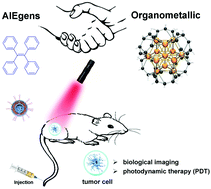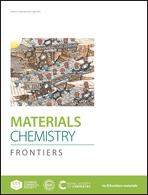Organometallic AIEgens for biological theranostics
Abstract
Up to now, a growing number of aggregation-induced emission (AIE) luminogens (AIEgens) have been constructed due to their fascinating photophysical properties in the aggregate state. Among them, the marriage of AIEgens and organometallic complexes has attracted increased attention owing to their great potential in biological probes and photosensitizers. Organometallic AIEgens (OMAs) possess the merits of both AIEgens (affording “turn-on” type probes in vitro and in vivo) and metal ions (enhancing electron transfer and intersystem crossing efficiency in the structure) to give effective photodynamic and photothermal therapeutic efficacy. In recent years, the research on organometallic AIEgens has made rapid progress, and a large number of research works referring to biological applications have been reported. To take an overall view, it is necessary to make a full review on the organometallic AIEgens for biological application. This review summarized the remarkable breakthroughs and developments of OMAs-involved biological imaging and theranostic systems that have been attained in recent years, such as the detection of metal ions and biomolecules, fluorescence imaging, disease diagnosis and treatment. The present review may entice readers to realize the importance of organometallic AIEgens, and attract much more chemists to give their contribution to this area.

- This article is part of the themed collections: FOCUS: Recent progress on aggregation-induced emission, 2021 Materials Chemistry Frontiers Review-type Articles and Luminogenic bioprobes for personal health technologies


 Please wait while we load your content...
Please wait while we load your content...